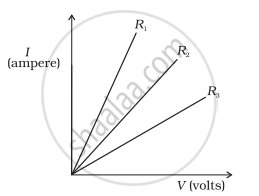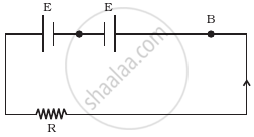Advertisements
Advertisements
प्रश्न
How does an increase in the temperature affect the specific resistance of a :
(i) Metal and
(ii) Semiconductor ?
उत्तर
(i) Metal : Specific resistance increases
(ii) Semiconductor : Specific resistance decreases
APPEARS IN
संबंधित प्रश्न
What will be the change in the current if the potential difference is kept constant and the resistance of the circuit is made four times?
- It will remain unchanged.
- It will become four times.
- It will become one-fourth.
- It will become half.
In a conductor 6.25 × `10^16` electrons flow from its end A to B in 2 s. Find the current flowing through the conductor (e = 1.6 × `10^-19` C)
What are non-ohmic conductors? Give one exmaple. Draw a current-voltage graph for a non-ohmic conductor.
Which of the following is correct for V-I graph of a good conductor?
A student carries out an experiment and plots the V-I graph of three samples of nichrome wire with resistances R1, R2 and R3 respectively. Which of the following is true?

State Ohm’s law? How can it be verified experimentally? Does it hold good under all conditions? Comment.

Calculate the total resistance of the circuit and find the total current in the circuit.
Two cells of same emf E but internal resistance r1 and r2 are connected in series to an external resistor R (Figure). What should be the value of R so that the potential difference across the terminals of the first cell becomes zero.
Let the resistance of an electrical device remain constant, while the potential difference across its two ends decreases to one fourth of its initial value. What change will occur in the current through it? State the law which helps us in solving the above stated question.
